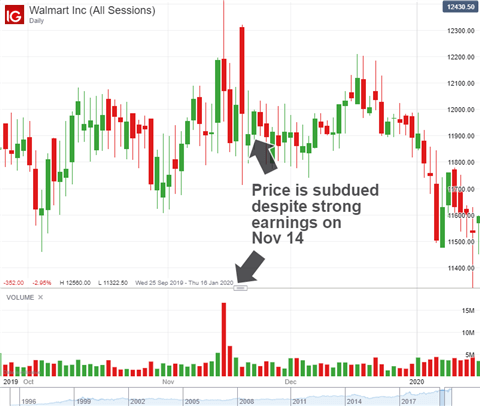Trading Earnings Season: 3 Steps for Using Earnings Reports (Part 1)
Pipscollector.com - Earnings season can be a great time for a trader to get insight on their equity investments, as well as benefit from short-term volatility. But in order to maximize this trading opportunity, there are some key considerations to make before diving in. Read on for our three steps to follow when using earnings reports for trading.
3 STEPS FOR USING EARNINGS REPORTS IN YOUR TRADING
Preparing for earnings season involves choosing the companies to focus on and undertaking thorough research on the market before executing the trade.
1) Choose Companies to Focus On
The first step is to select the stocks to trade during the period. It is advisable for traders to go for a small number of companies, perhaps stocks with which they are familiar or trade already and find out the dates on which their earnings will be released. Large bellwether stocks are worth investigating, whether one is trading them or not, as their results can impact wider industries.
When deciding on the stocks to go for, traders should understand that the relationship between an earnings result and subsequent price reaction is not always straightforward. Although better-than-expected earnings are generally bullish, they do not always translate to immediate price gains and the opposite holds true as well. An example of this can be seen below, with Walmart’s strong earnings in Q3 2018 failing to excite market participants.

While encouraging, a quarterly report is more than last quarter’s results compared to expectations. Indeed, analysts are often much more concerned with the future expectations of the firm as price is a forward-looking metric, with future earnings being calculated in current prices.
With that in mind, it becomes more reasonable when investors shy away from a stock with strong results for the past quarter, but an abysmal outlook for the future. A weaker outlook can seriously undercut a stock’s current valuation, regardless of past performance, a fact that is realized all too often during earnings season.
2) Do Your Research
Doing your stock research properly will involve looking at estimated earnings for your chosen stock and how they compare with analysts’ expectations. Also, traders should make sure they look at historical figures to get a feel for how the market has responded to releases in the past.
While earnings season is typically thought of in terms what the results mean for a single stock, the season as a whole can also offer important takeaways.
Information is offered on a company-specific basis, but common themes can ring true throughout. Headwinds like coronavirus, geopolitical tension, regulatory uncertainty or cyclicality can combine to form a wave of worries across a sector if cited often enough.
Traders should investigate how such headwinds impact one sector or stock compared to others. For example, while a great many industries suffered during the coronavirus outbreak, March 2020 saw Greece-based tanker vessel operator Top Ships Inc (TOPS) experience a surge in product demand in areas such as cleaning supplies and paper products leading to increased shipping requirements. This in turn created higher trading volume and volatility.

The effect of headwinds has also been witnessed, for example, with Brexit as companies delay capital expenditures until a post-Brexit order is established and the business environment is stable. Similarly, frequent mentions of trade-related headwinds have worked to undermine a variety of sectors from semiconductors to consumer staples in the US amid the US-China trade war, evidenced in the chart above by the surging mentions of ‘tariff’ in earnings reports for companies in the S&P 500.
While these issues may not doom a stock to negative returns singlehandedly (as the TOPS example demonstrates), their appearance across an entire market can hint at their pervasiveness and the broader downward pressure they can exert on outlooks and valuations. Consequently, traders should monitor common complaints among corporations as it may help inform their broader macroeconomic strategy as anecdotal evidence builds to form a tangible threat to the broader index.
